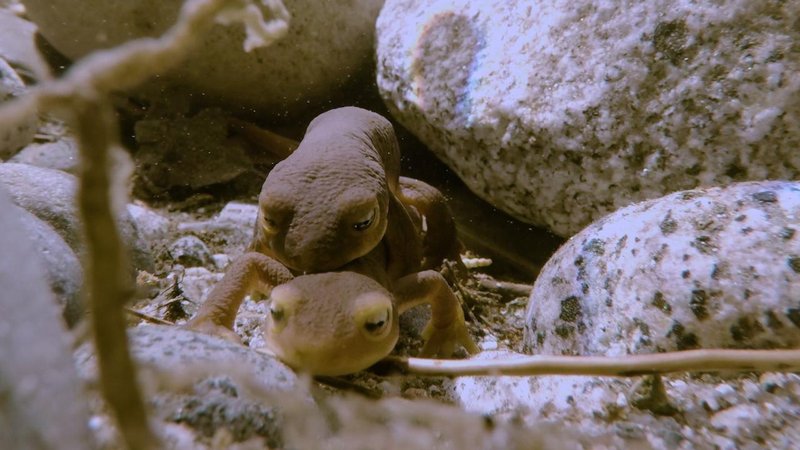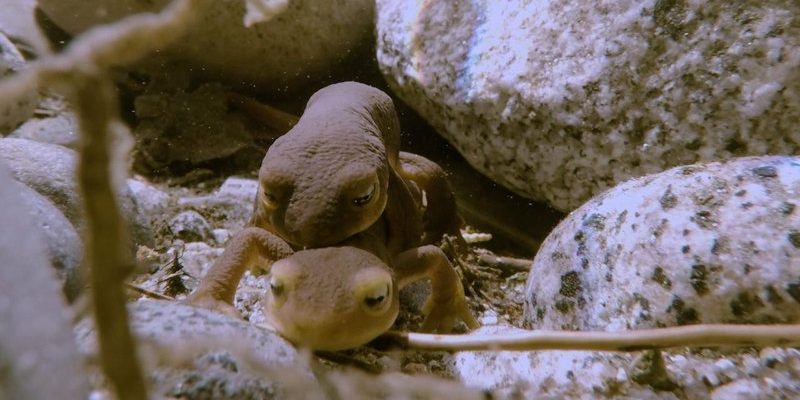
Newts belong to the family Salamandridae, and they are known for their unique life cycles and interesting reproductive behaviors. One key thing to know is that newts have two main life stages: the aquatic larval stage and the terrestrial adult stage. Their breeding patterns vary significantly depending on whether they’re in water or on land, and understanding these behaviors gives us insight into their survival strategies. So, let’s dive into the enchanting world of newt breeding and reproductive behavior!
The Newt’s Life Cycle: A Quick Overview
Newts go through a series of fascinating life stages. Generally, they start as eggs, hatching into larvae, then moving on to adulthood. The process begins when female newts lay their eggs, often in clusters. These eggs are usually attached to aquatic plants—a safe haven for the developing larvae.
Once they hatch, the larvae spend some time in the water, where they feed on tiny organisms. This phase lasts for several weeks, during which they undergo significant changes. After this, they transition to land, becoming adults. At this point, they can return to the water for breeding. It’s like a cycle of rebirth, where each stage prepares them for the next challenge in their life.
From Egg to Larvae
The journey starts with the female laying eggs in water. Newt eggs can be quite beautiful—transparent, round, and often enveloped in a jelly-like substance that protects them. Each female can lay hundreds of eggs in a single season! As these eggs hatch, the larvae emerge, equipped with gills for breathing underwater. They look a bit like tiny fish, swimming around as they hunt for food.
During this stage, larvae grow rapidly, shedding their skin multiple times as they develop. Isn’t that miraculous? This growth phase is crucial since it sets the foundation for the adult’s physical capabilities. If conditions are just right—plenty of food, clean water—they thrive, setting themselves up for a successful life.
Breeding Season: The Mating Ritual
When the time comes for newts to breed, they can be quite the show-stoppers. Typically, breeding season occurs in early spring, coinciding with warmer temperatures and the return of water in certain areas. The males are usually the first to arrive at breeding sites, where they perform intricate courtship displays to woo the females.
You might be wondering what these displays look like. Well, male newts often engage in a series of fascinating movements called “tail fanning.” They’ll shake and wave their tails, showcasing their colors, which can be quite vibrant. This behavior not only attracts females but also serves to establish dominance among other males. It’s like a beauty pageant mixed with a dance-off!
The Role of Colors and Patterns
Color plays an essential role in newt courtship. Males often don bright, flashy colors during the breeding season, making them more attractive to females. Different species have different color patterns, but many display spots, stripes, or even vibrant bellies. These colors signal the health and vitality of the male, which is crucial for females when choosing a mate.
This connection between color and health isn’t just fascinating; it’s vital for the species’ survival. A female that selects a brightly colored male is more likely ensuring that her offspring inherit strong genes. That’s a pretty smart strategy, if you ask me!
Amplexus: The Unique Mating Position
Once a female chooses a mate, the next phase is called “amplexus,” a term used to describe when the male grasps the female’s back in a tight hold. This position is quite common in amphibians and typically lasts for several hours. During this time, the male fertilizes the eggs as the female lays them.
It’s interesting to note that males can engage in amplexus with multiple females. This strategy increases his chances of passing on his genes, and it’s not unusual for a male to have a small harem of females around him during this time. It’s like having multiple dance partners at a party—lots of fun and a great way to spread his genetic influence!
Egg Laying and Care
After the mating session, the female lays her eggs, often in a safe spot along aquatic plants. This nurturing behavior ensures that the eggs have a place to develop away from predators. The process can be quite labor-intensive, but it’s crucial to the survival of the species. After laying the eggs, the female doesn’t stick around to care for them, allowing nature to take its course.
Each egg has a protective jelly coating to shield it from predators and environmental hazards. It’s nature’s way of ensuring that at least some will survive to adulthood. Isn’t it amazing how evolution has equipped these creatures with such effective strategies?
Challenges in Newt Reproduction
Despite their fascinating reproductive behaviors, newts face various challenges in their breeding cycles. Habitat loss, climate change, and pollution can impact their breeding grounds significantly. As these environments deteriorate, it becomes harder for newts to find suitable spots for breeding, which could lead to population declines.
Moreover, interspecies competition can also pose a challenge. When different species of newts share the same habitat, they might compete for the same resources, leading to stress and reduced reproductive success. It’s a tough world out there for these little creatures!
Conservation Efforts
Many organizations and researchers are focused on preserving newt populations and their habitats. Conservation efforts can include protecting wetland areas, restoring ecosystems, and raising awareness about the importance of these amphibians. Every little bit helps!
By understanding the unique reproductive behaviors of newts, we can appreciate their vital role in our ecosystem. Protecting their breeding habitats means safeguarding future generations of newts. After all, who wouldn’t want to dance along with these marvelous creatures?
In summary, the breeding and reproductive behavior of newts is a captivating aspect of their biology. From their intricate courtship rituals to the struggles they face, every part of their life cycle is a marvel of nature. Understanding these behaviors not only highlights the beauty of newts but also reminds us of the importance of conservation.
So next time you see a newt or even hear a story about one, remember the fascinating journey they undertake to reproduce. They’re not just “little creatures” but incredible survivors, showcasing nature’s wonder in a truly unique way. Let’s cherish and protect these enchanting amphibians for generations to come!

